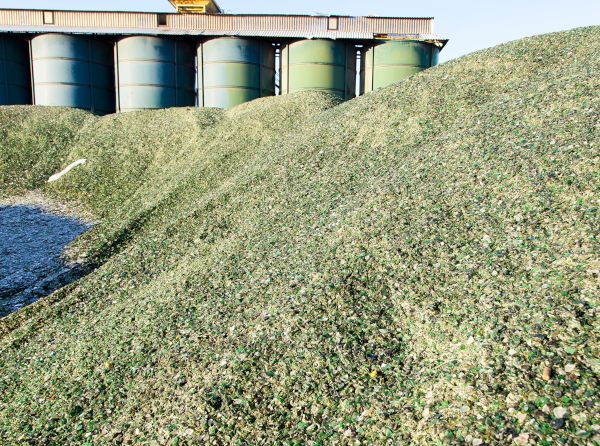In Germany, the most important raw material for new glass packaging is and remains waste glass. Glass recycling is the most important supplier for new glass production in Germany. A significant advantage of used glass: it can be recycled as often as desired. The prerequisite is that the glass is disposed of correctly so that it can be appropriately reprocessed afterwards. For glass recycling, there are around 300,000 glass containers throughout Germany where consumers can dispose of their glass.
What fits in the waste glass?
Please only throw container glass into the glass containers. No drinking glasses, no light bulbs, no porcelain and no earthenware! Ceramic particles and stones form inclusions in new glass. Different types of glass melt at different temperatures – that's why fireproof glass (e.g. glass pots from the coffee machine) does not belong in the glass containers. Flat glass, window panes or mirrors should also not go in – there is usually a drop-off option for them at the recycling center. The following applies: For a high quality of the cullet and thus of the newly produced glass, an exact separation of the used container glass is required.
How to recycle used glass: Off to the right container
When you dispose of glass, please make sure that it is sorted into the correct colors: in Germany, there are usually collection containers for white, green and brown glass. This is very important, because it is difficult to recreate a specific glass color from glass fragments that have been thrown together in a motley fashion. Blue and red waste glass belong to the green glass, because green glass can absorb the largest amount of foreign colors. Please keep to this separation. Because only in this way can the glassworks produce color-fast bottles and jars again.
What happens to it?
Experienced sorters of recyclable waste know that glass can be recycled as often as desired. It does not belong in the yellow bin, but rather in the bottle bank where it should be sorted by colour into the containers for clear, green and brown glass. Blue glass also goes in the green glass container.
Separation by colour is very important for later recycling. This is because clear glass does not tolerate any other colours at all, while brown glass has a tolerance of no more than eight percent and green glass of up to 15 percent. Today waste glass is the most important component of new glass packaging. The Green Dot waste management partners transport the material from the bottle banks directly to the processing plant where it is crushed and any impurities such as caps and labels are removed. After this, the fragments are sieved by size and checked once again for incorrect colours and other impurities. Finally, the glass granulate is melted in the glassworks and used to produce new containers.
